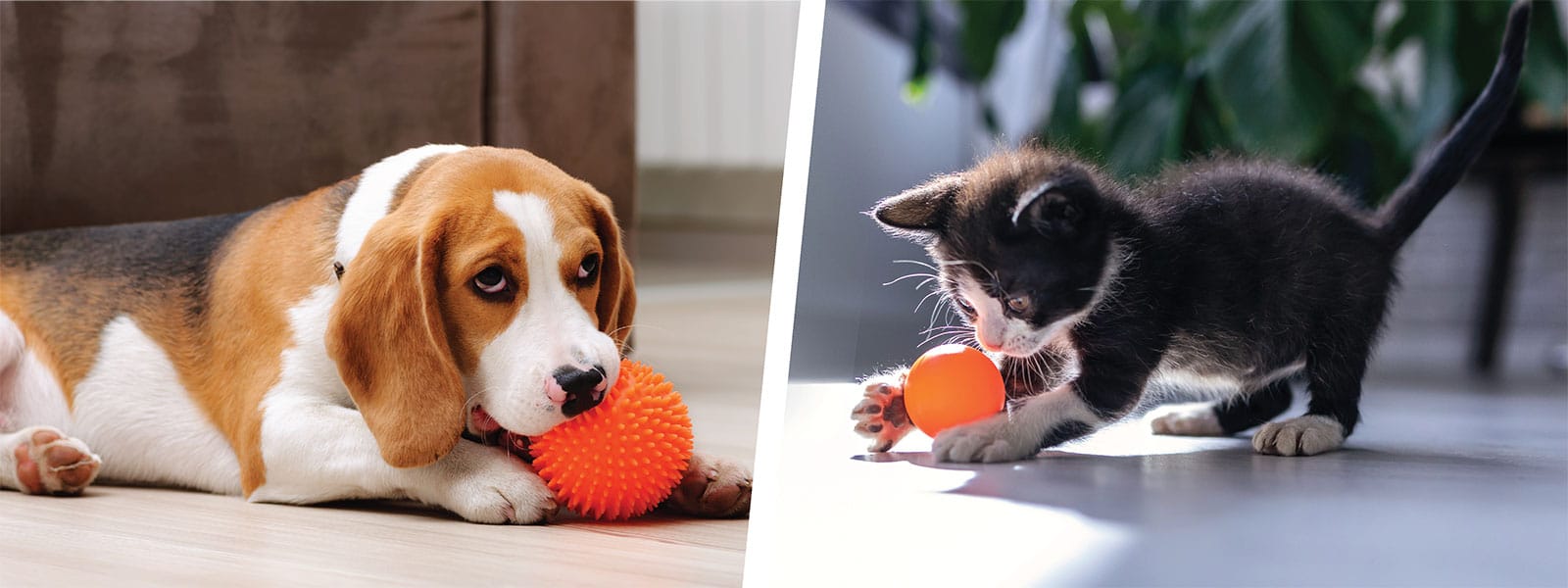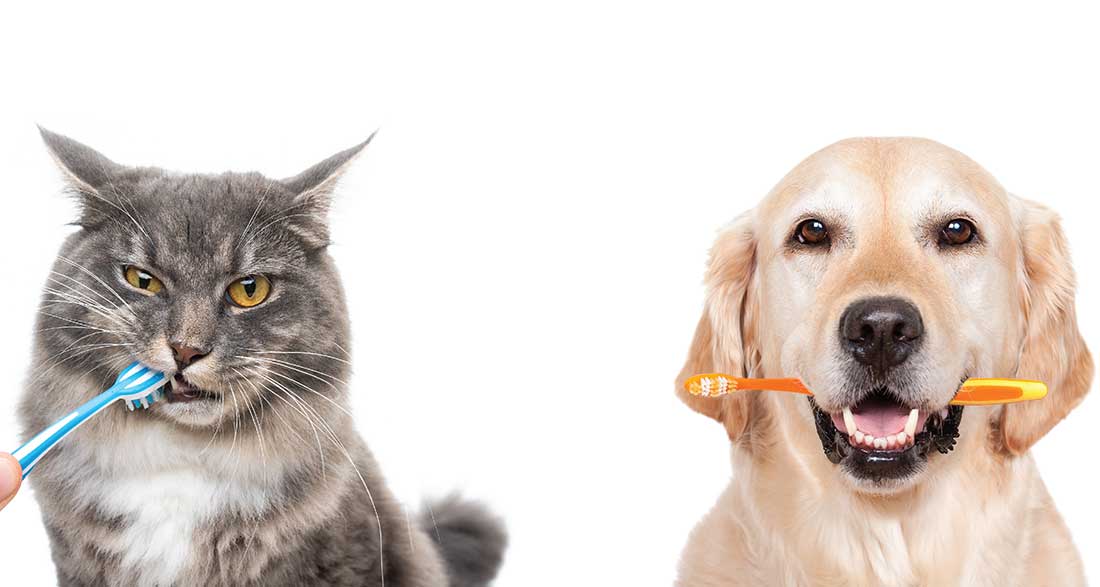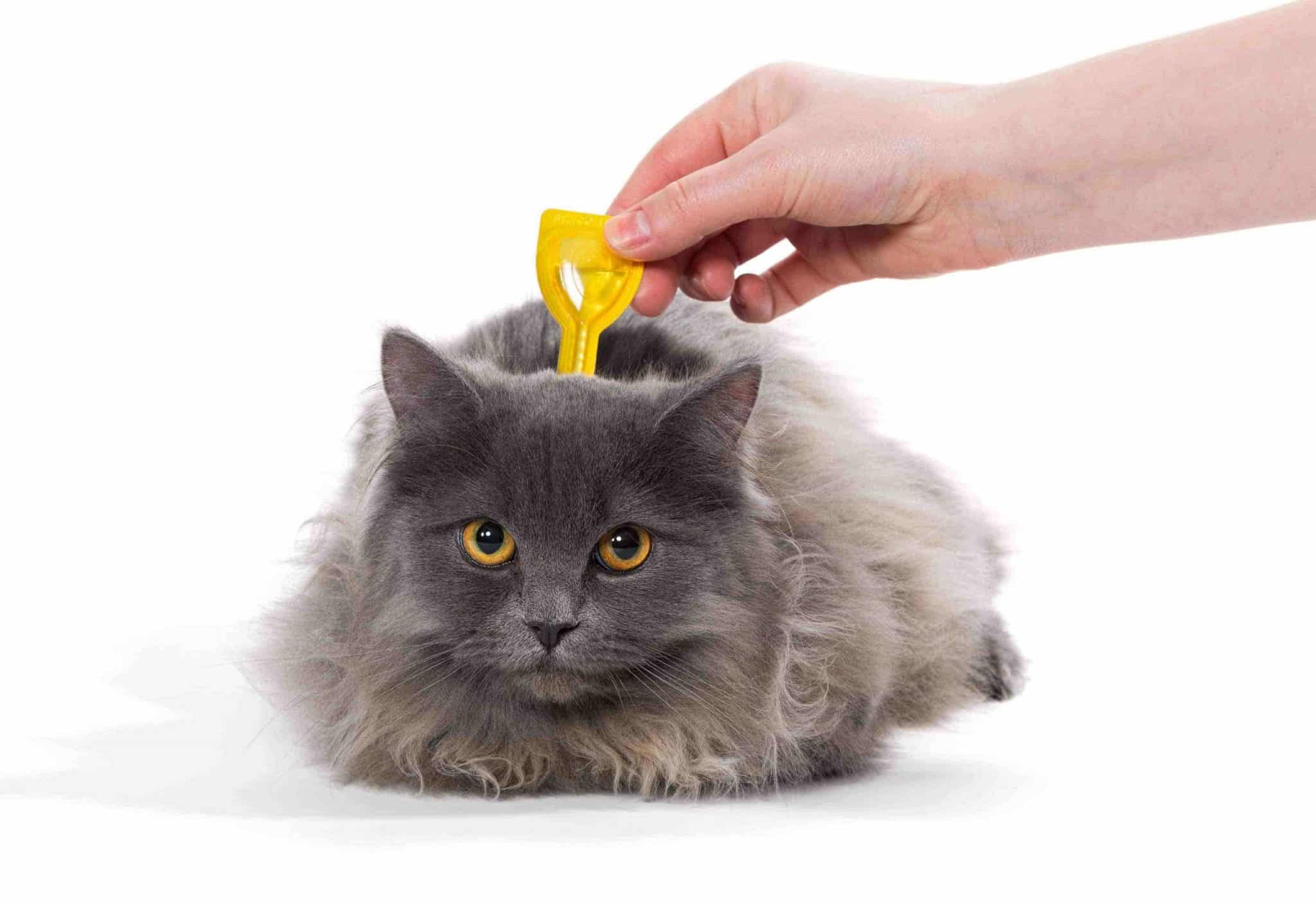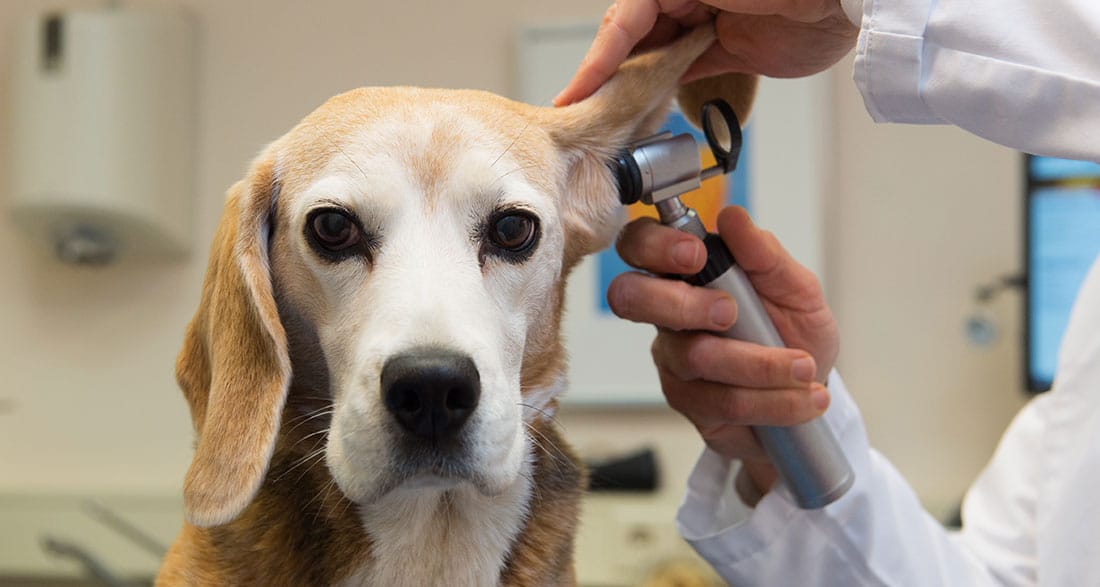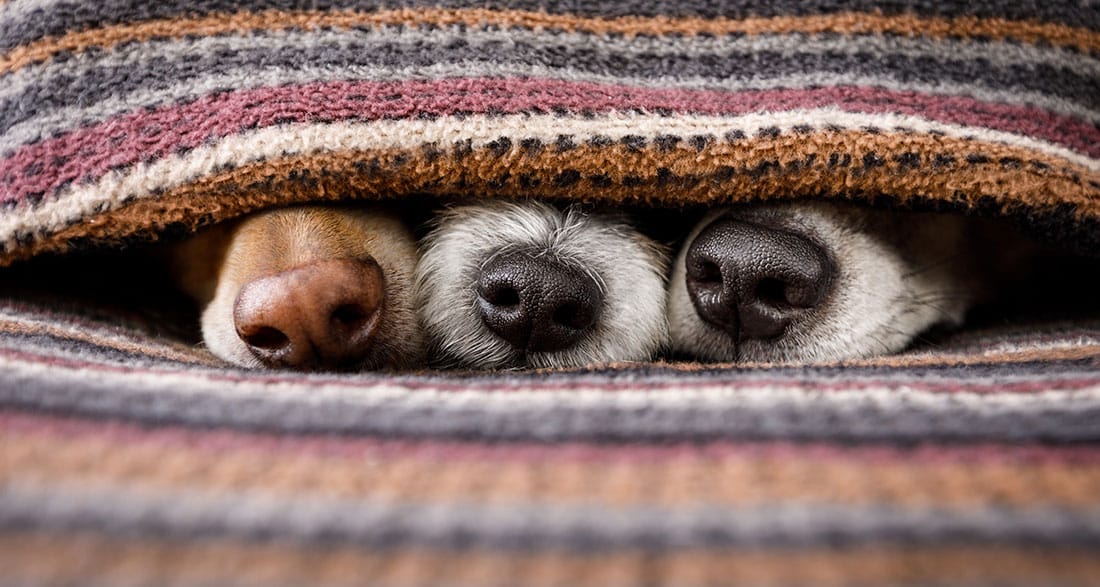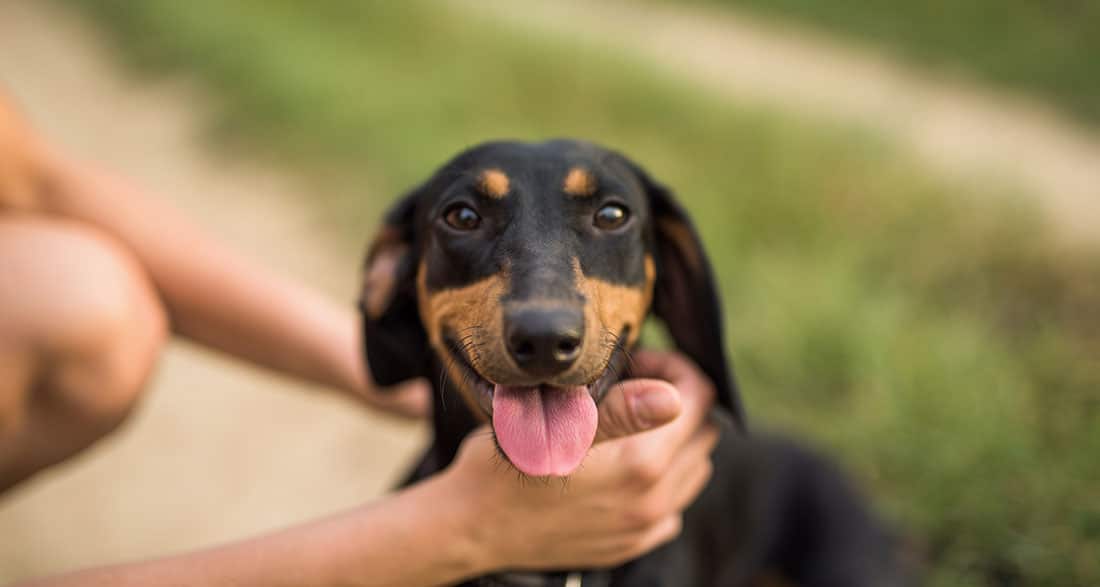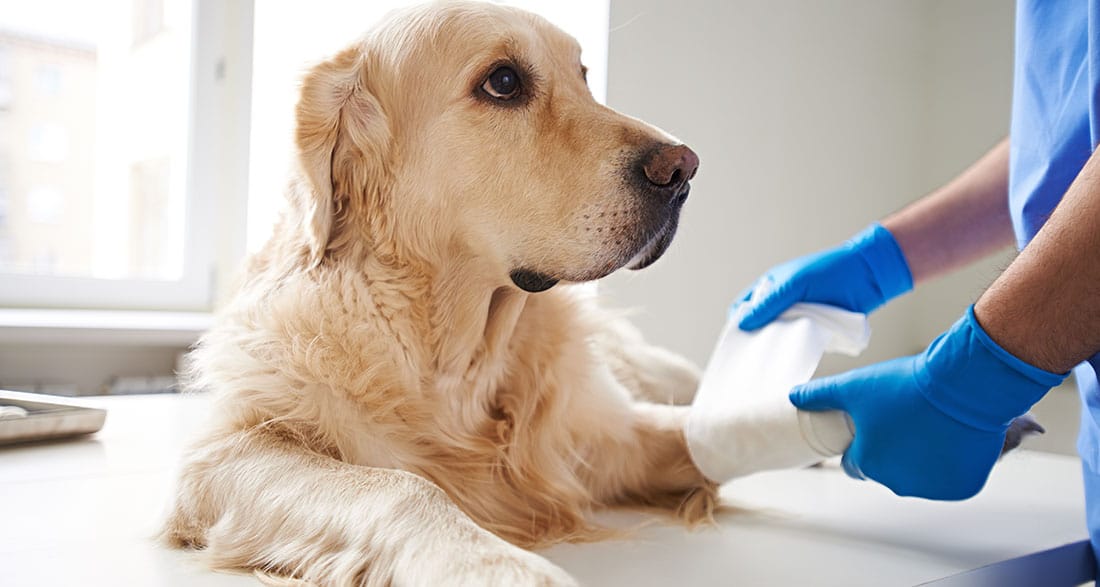You can browse through the articles in our newsletters by clicking on the relevant edition. Alternatively, the “Search” option in the window at the top of the page can be used to help you find specific information.
Keeping your pets active in winter
It can be hard to get out of your warm bed or off the cosy couch on a winter’s morning for exercise, and your pet can feel the same way too! It's important to continue exercising your pet in winter, as well as keeping them mentally stimulated. Being cooped up inside can encourage destructive and other negative behaviours. On a fine day, walks, runs, catching up with friends and play sessions in the park are perfect ways to keep your pet active. Depending on your pet’s personality and coat, you may be able to exercise in light rain with a dry-off after. If this is not possible, here are some inside and weather-proof activity ideas you and your pet can enjoy: If your pet has healthy joints, walking up and down a set of stairs is a great work out! [...]
Dental disease and prevention
Dental disease is one of the most common but preventable diseases in pets. It is not only painful and uncomfortable, but the procedure to clean and remove teeth becomes more complicated and often more costly the longer it is left untreated. What is dental disease? Dental disease is caused by a bacterial infection that builds up in a substance called plaque. Plaque is made up of food particles and saliva. It sticks to the tooth surface above and below the gum line and if not removed, will calcify into tartar (or calculus). Over time the bacterial infection in tartar causes irreversible changes to occur. These include the destruction of supportive tissues and bone, resulting in red gums bad breath and loosening of teeth. How do I prevent dental disease? Good oral hygiene is the most effective way of preventing dental [...]
Keeping Your Indoor Cat Happy
Keeping your cat entertained in your home can become a full-time job. That is why we have put together some tips to keep your indoor cat happy and engaged; Create a high area for your cat to perch Getting up high is an important way to relieve stress in the feline world. It is therefore essential to have accessible and safe high up resting places. Play with your cat Our cats are natural hunters and therefore like to engage in short bursts of playful energy. Toys are a great way to interact with our cats during this time. Talk to us to find out our toy recommendations. Purchase safe self-play toys As much as we would love to spend 24/7 with our cat, we do often need to leave them alone. Self-play toys are an excellent way for your [...]
There’s Something in the ‘Hair’ – Grooming Your Pet
As we enter the warmer months, grooming is a particularly important aspect of our pets' health and comfort. Just like us, they can really benefit from the comfort of a nice, warm bath and well-brushed hair (although you can forego the soy candles and bath bomb). A well maintained coat looks and smells great, and frees your furry friend from the pain of tangled and matted hair. The Benefits of Grooming Your Pet Spending time brushing your pet will strengthen the bond you have with them. Regular grooming improves skin and coat health, which reduces the risk of skin disease and infections. Shiny and healthy coats will shed less, which means less mess on the furniture! Showing your pet that being handled and brushed is fun and safe can make vet checks far less scary for them. Inspecting their skin [...]
Jump Into Tick & Flea Season – Protect Your Pets
While we're out enjoying the sunshine with our pets, fleas and ticks are quietly making the most of the season as well. While these little blood suckers can strike in any weather, the warmer weather in Australia seems to bring with it an increase in parasite infestations. Soft fur makes your pet a perfect nesting ground and source of food for both fleas and ticks. While they're known for the irritating itch, flea and tick bites can cause our pets to suffer with severe health problems, like anaemia and blood borne diseases. An infestation is a painful and distressing experience for our furry friends, and it's up to us to protect them. Fleas Fleas are tiny jumping insects that feed off the blood of mammals and birds. Their bite can cause allergic reactions, and if severe can lead [...]
Is Your Pet Showing Signs of ‘The Itch’?
As nice as it is to finally say goodbye to winter, spring brings its own challenges for some pets. Just like humans, dogs and cats often suffer from allergic reactions. While we pull out the tissues, our pets are more likely to wind up madly scratching, often to the point of breaking the skin. Watching your furry friend suffer can be a very distressing experience. Allergic dermatitis is a common and painful inflammatory skin disease in cats and dogs. The onset of this condition is triggered when the body mistakes an allergen in the pet's environment, such as pollen, as a harmful attacker and activates the immune system. The Cause of Allergic Dermatitis in Cats and Dogs Pets who suffer from allergic dermatitis can experience reactions to multiple allergens, and in some cases, two or more allergens at one time. [...]
Otitis—Ear Infections
There are many things that dogs are good at and one of these is getting ear infections. Dogs have an L-shaped external ear canal which facilitates the trapping of moisture, yeast and bacteria. This combined with the limited ventilation of the L-shaped canal and the lid created by the floppy ears of some breeds means that the inside of the ear canal is the perfect dark, moist environment for bacteria and yeast populations to blossom, leading to ear infections, or otitis. Structural problems such as a narrowed ear canal can also predispose some dogs to developing otitis on a regular basis. Other dogs may develop frequent problems due to underlying skin allergies, which can also affect the lining of the ears as the ears are lined with a type of modified skin. Inflammation if the lining of the ears [...]
Heat Stroke
With the summer months upon us, heat stroke in our pets is a real and present danger. Heat stroke can result in a complete shut-down of metabolic functions and can become fatal in an amazingly short period. There are a few important preventative measures that will hopefully allow your pet to avoid being one of the unhappy victims. Never leave your pet in a car with the windows closed, no matter how short a period you think you may be away from the vehicle. Don’t walk your dogs in the heat of the day. Exercise them in the cool of the early morning or the late evening. When you do walk your dog during summer, carry some water in a container for him to have a drink along the way. If he becomes puffy and stressed, be prepared to let him rest for [...]
“HOT SUMMER” = “HOT SPOTS”
"Hotspots" are a familiar summer-time problem for many owners of long-haired dogs. A hotspot is basically a focal area of bacterial dermatitis. It occurs because the bacteria which normally live on the skin- the "normal flora"- are given better than usual conditions in which to grow. Given ideal conditions- at least from the "bacterial point of view", the normal flora ceases to be controlled by the defence mechanisms of the body, and start to grow out of control. The result is an area of very inflamed, painful skin covered in pus and scabs. The two things that bacteria like best are warmth and moisture.Both these things are in good supply in an average Sydney summer, especially in the more humid months towards the end of summer or during periods of rain. The problem may occur in any dog, but it's [...]
Help Your Pets Cope With Storms and Fireworks
As we come closer to Christmas and the New Year, it’s important to remember that our celebrations can have quite a negative impact upon our pets. Christmas involves many changes in routine, parties, visitors and excessive noise in the neighbourhood. Summertime also means a higher occurrence of thunderstorms. New Years Eve can cause severe distress in our pets if they have a fear of fireworks. Pets do not overcome their fear of noises or thunderstorms and most often the problem worsens with every exposure. Products containing pheromones are available to help our cats and dogs cope with fear of fireworks. Pheromones are chemicals that animals use to communicate to one another. There are many pheromones in the animal kingdom providing several different signals. ADAPTIL™ (contains Dog Appeasing Pheromone) and Feliway® are synthetic copies of animals own natural pheromones [...]
Administering Medication to Your Cat
Often when we hand over a bottle of pills for a cat who is a little under the weather, we are confronted with an expression of dread on the part of an owner contemplating the prospect of having to actually administer those pills. We know what you're thinking: it's easy for us, after years of experience, to say "just do it". In fact, though, the vast majority of cats are quite easy to medicate, as long as you are privy to a few tricks of the trade. PILLS [The following instructions apply to a right-handed person. Reverse the directions if you are left-handed]. Start by giving yourself an advantage: place the cat on a waist-high table, on a non-slip material. Position the cat facing towards your right. Hold the tablet between the thumb and index finger of your right [...]
Understanding Your Pet’s Blood Tests
Often when we are in the process of investigating a patient’s illness, we may recommend to you that we perform blood tests to help us in reaching a diagnosis. In veterinary practice many of the tests that are available to us are much like the ones you would be familiar with from your own experiences with medical practitioners. One of the most common blood tests we recommend is a Pre-Anaesthetic Profile (PAP). This gives us information on the status of the patient’s red cells, blood protein level, liver enzymes, kidney enzymes, blood glucose and electrolyte levels. These tests can provide information which can sometimes be vital to ensuring the best possible outcome from the animal’s anaesthetic procedure. We recommend a PAP for any animal undergoing anaesthesia, and particularly for any over 6 years of age. Even in young, apparently healthy, animals [...]
Urinary Incontinence in Dogs
Who me...???? Urinary incontinence is the inappropriate passage of urine. It can be caused by congenital abnormalities, which the animal is born with, or acquired disorders. Signs of urinary incontinence include the involuntary dribbling of urine, which may be noticed as puddles left behind particularly when the dog has been sitting or sleeping for a period of time.The most common causes for urinary incontinence include: Congenital AbnormalitiesEctopic UretersThe most common congenital abnormalities are ectopic ureters, which are an anatomic abnormality that the pup is born with. Ureters are the thin tubes that drain urine produced by the kidneys into the bladder. In ureteral ectopica, one or both ureters drain in an incorrect position in the bladder or urethera, the outlet channel from the bladder. This condition is seen almost always in female puppies, and the most commonly affected breeds [...]
Mast Cell Tumours in Dogs
What are mast cell tumours? Mast cell tumours are one of the most common type of skin tumours in dogs. They arise from mast cells, which are a special type of cell which play a part in the animal’s immune system. They are primarily found in the skin and play a part in inflammatory reactions, releasing a chemical called histamine. Mast cell tumours can vary greatly in shape and appearance (which often makes diagnosis difficult) and they can be present on or under the skin (in the subcutaneous tissue). In rare cases, mast cell tumours can arise from areas other than the skin. Mast cell tumours can occur in all ages and breeds of dogs, but the average age at presentation is ~8-9 years of age. The exact cause of mast cell tumours is still uncertain. A viral source [...]
Is My Cat Going Crazy
The thyroid gland is a small pink gland that lies in the neck to either side of the trachea. It produces hormones called thyroxine (T4) and triiodothyronine (T3), which play an important role in energy metabolism in the body. When the thyroid gland becomes overactive and produces too much of these hormones, the condition is called hyperthyroidism. Hyperthyroidism is one of the most common diseases in older cats. It usually occurs in cats over 9 years of age. In most cases, the excess production of T3 and T4 is attributable to a benign but functional tumour in the gland. The result is an excess of thyroid hormone levels in the circulation, which significantly speeds up the metabolism. The excess hormones affect the heart, causing a rapid heart rate and sometimes leading to cardiac insufficiency and failure. High levels [...]
Lumps, Bumps and Warts – The Lumps We See
Skin growths are one of the conditions we see very commonly. Because the skin is such a complex organ and contains so many different cell types, we can get a fascinating variety of primary skin tumours, cysts and so forth in the skin. There is also the potential for the skin to develop secondary tumours (tumours which have arisen elsewhere in the body and then spread to the skin). The skin is the body’s first line of defence. We effectively live in a “soup” of bacteria, toxins and allergens. The only reason we, and our canine and feline friends, are still standing is ecause of the defences of our skin against all these things. The skin has cells which defend against bacterial invasion, defend against radiation exposure, act as a physical barrier to the world, produce secretions to lubricate the skin, [...]
Cruciate Disease in the Dog
The stifle joint has the same structure as the human knee and the cruciate ligaments are located inside the knee and join the femur, in the thigh, and tibia, in the calf area, together. They are called cruciate ligaments because they cross over each other inside the knee. The cranial cruciate ligament limits twisting and excessive forward motion of the tibia relative to the femur and also prevents overextension. In other words it offers a large amount of stability to the joint. The most common ligament which ruptures is the cranial cruciate ligament (CCL).Cruciate disease is complex, but is fundamentally a secondary disease caused by partial or complete rupture of the cranial cruciate ligament. This causes instability in the stifle (knee) joint which can lead to degenerative changes (osteoarthritis) in the knee. Rupture of the CCL may be caused by [...]
Canine Cushing’s Disease
Hyperadrenocorticism (Cushing’s disease) is a reasonably common disease of middle-aged to elderly dogs. It affects both male and female dogs equally but tends to occur more commonly in smaller breeds. Cushing’s disease results in an ongoing overproduction of cortisol (a natural hormone that is normally produced in times of stress) from the adrenal glands which are found in the abdomen, just in front of the kidneys. There are two main categories of Cushing’s disease. The more common of these types (85% of cases) is Pituitary-dependent hyperadreno-corticism (PDHA), in which the pituitary gland at the base of the brain produces too much of another hormone, which results in over stimulation of the adrenal glands. PDHA is generally due to a very small benign tumour on the pituitary (a microadenoma) but in a small number of cases can be due to [...]
Pancreatitis
What is the pancreas? The pancreas is an organ in the abdomen which produces both insulin (needed for control of blood sugar levels) and also digestive enzymes which are needed for the normal digestive processes of the animal. The pancreas is one of the most underrated organs of the body. It is just as necessary as the heart and brain because you cannot live without the pancreas. When the pancreas behaves badly it causes severe disease problems. What is pancreatitis? This is a disease where the pancreas becomes inflamed. When this happens it releases its digestive enzymes directly into the pancreas itself and these enzymes start to damage the pancreas. This results in the symptoms of severe vomiting and abdominal pain. The dog will often have a high temperature, sometimes diarrhoea and the patient can be very severely ill and [...]
Pre Anaesthetic Testing
Pre anaesthetic testing helps us to care for your pet. We recommend it before placing your pet under anaesthetic. As in human medicine the anaesthetics available are extremely safe and as a result the risk is greatly minimised on a healthy animal. However, if your pet is not “healthy” complications can occur both during and after the anaesthetic procedure. Therefore in order to minimise the potential risk associated with anaesthetic, it is important we know the complete health status before placing him or her under anaesthetic. Prior to anaesthetic we will obtain your pet’s medical history. However, to understand the “overall” health, we like to perform Blood Chemistry and Electrolyte tests. The standard Pre-Anaesthetic Panel (PAP) tests done in-house at GVH include Blood Chemisty, Electrolytes and Haematocrit. These provide information concerning your pet’s vital organs, such as the liver, kidneys, [...]


